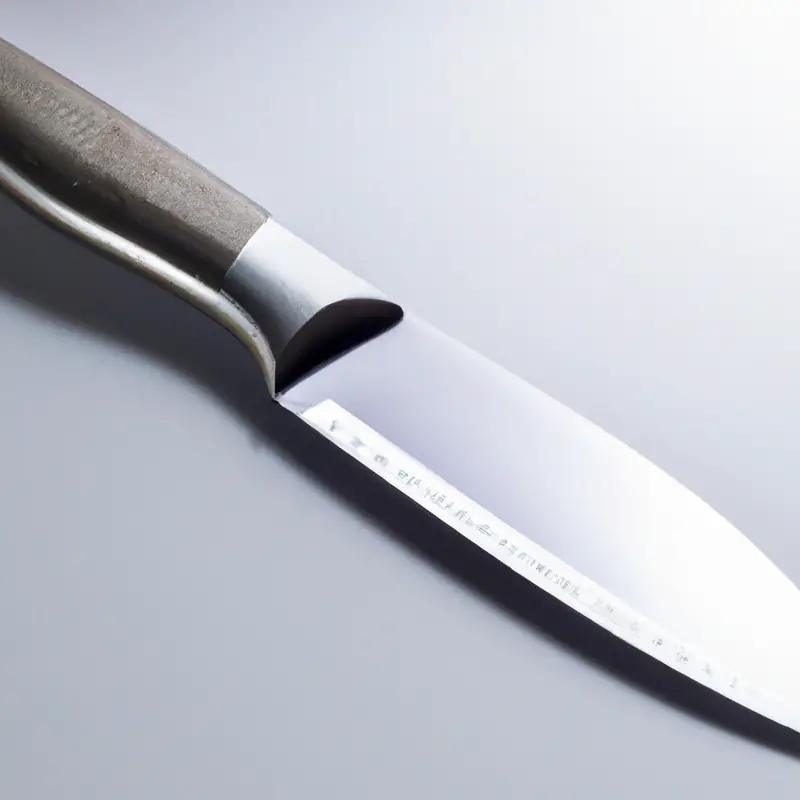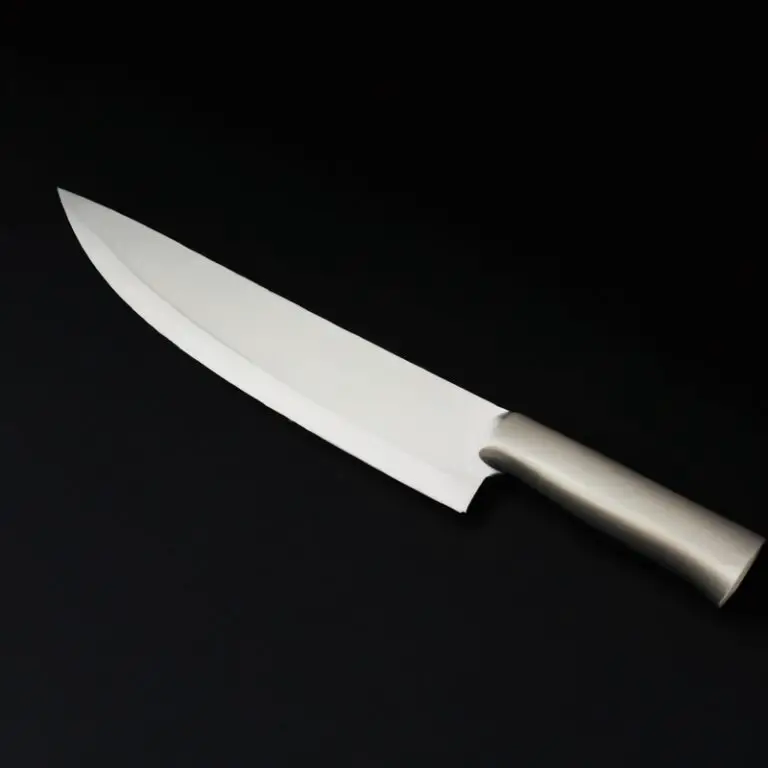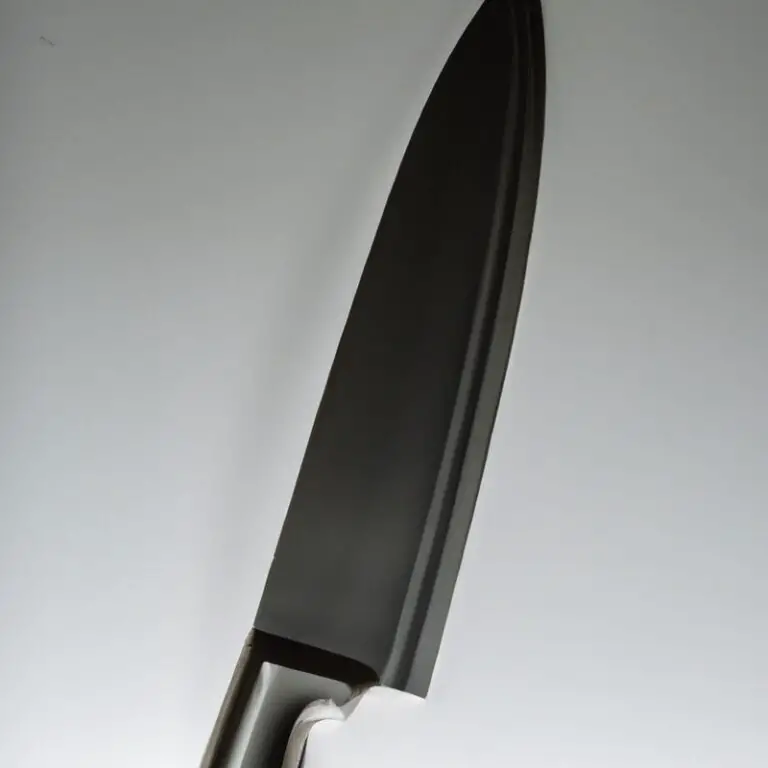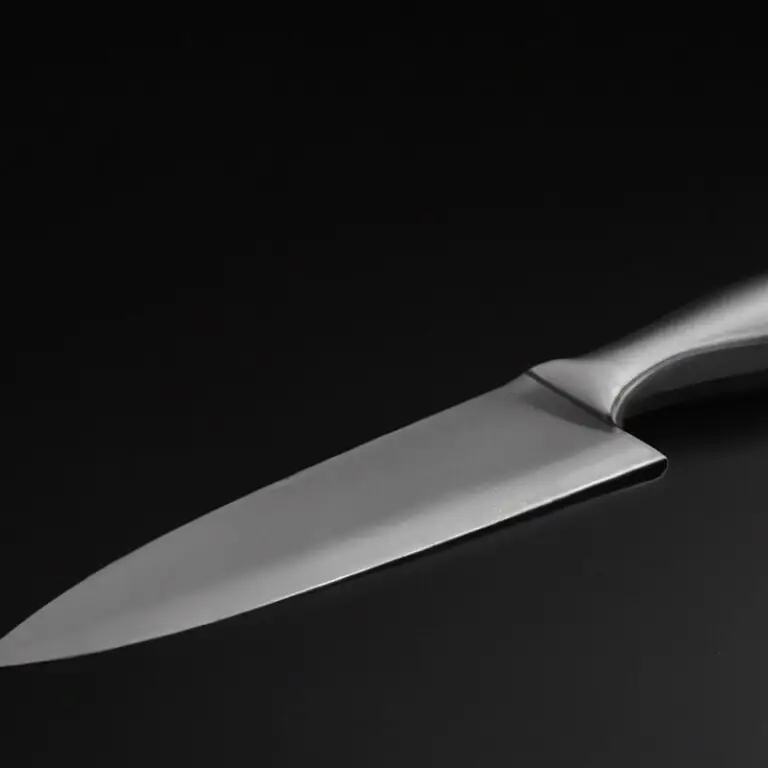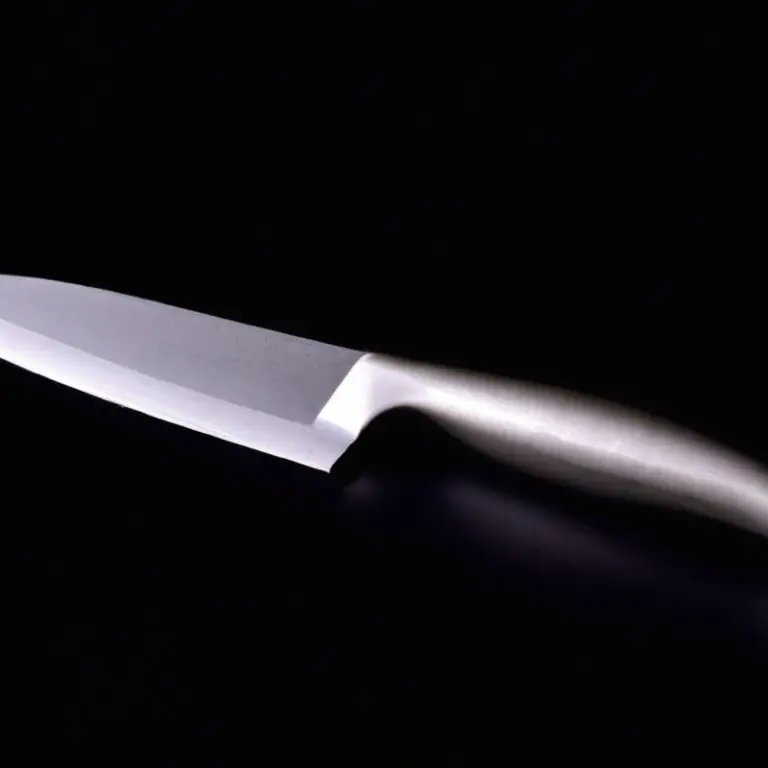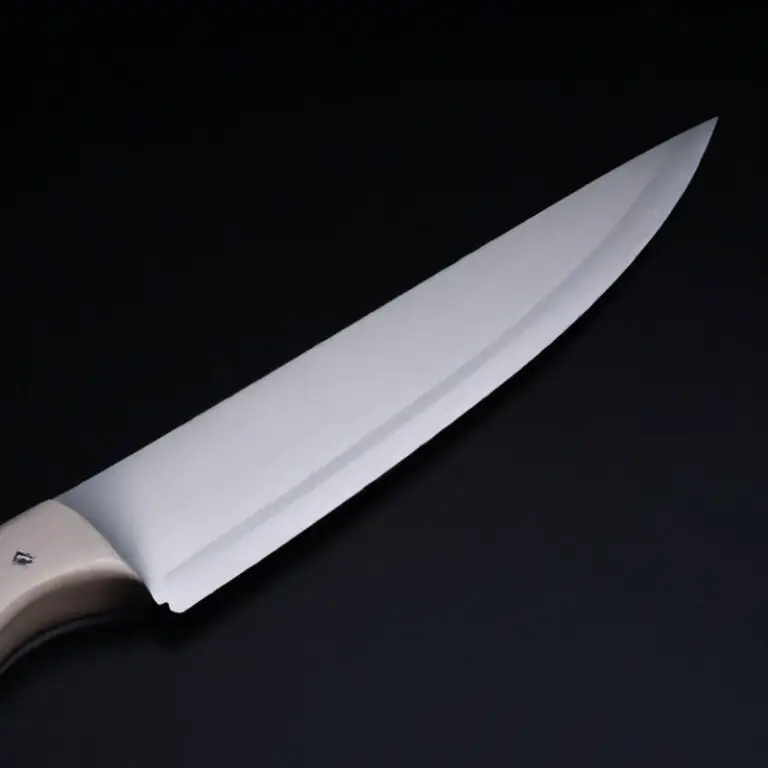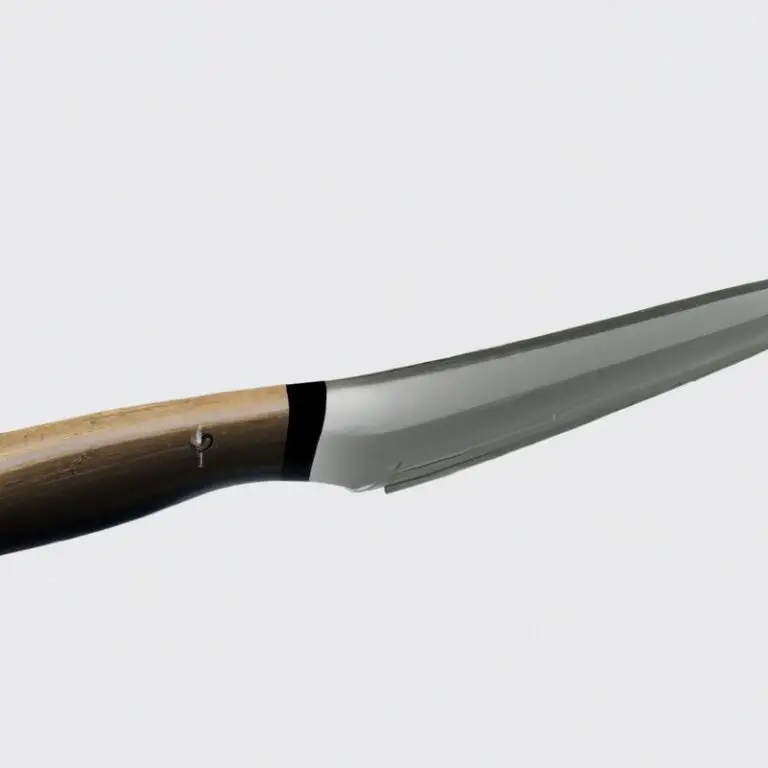Importance Of a Knife Blade Guard For Santoku Knives – Essential!
Key Takeaways:
- Using a knife blade guard can protect your Santoku knife from damage, extending its lifespan.
- A knife blade guard not only protects the knife, but also enhances safety during storage and transportation.
- Investing in a good quality Santoku knife and a blade guard can ensure a professional and reliable cooking experience.
- Properly maintaining your Santoku knife with a blade guard can help preserve its sharpness and prevent accidents in the kitchen.
A Santoku knife is a versatile kitchen tool that’s perfect for chopping, slicing, and dicing. However, its razor-sharp blade needs to be handled with utmost care to avoid accidental injuries and maintain its sharpness.
This is where a knife blade guard comes in handy.
Not only does it protect the blade from rust and corrosion, but it also ensures that the edge stays sharp for longer. In this article, I’ll be discussing the importance of a knife blade guard for Santoku knives, how to choose the right one, and tips for usage and maintenance.
Keep reading to find out more.
| Topic | Importance of a Knife Blade Guard for Santoku Knives |
|---|---|
| Definition | A knife blade guard is a tool used to protect the sharp edge of a knife blade when not in use. It can be made of various materials such as plastic, rubber or silicone. |
| Advantages |
|
| Disadvantages |
|
| Conclusion | A knife blade guard is an important tool for protecting the sharp edge of Santoku knives. The benefits outweigh the disadvantages, as long as the guard is properly fitted and dried after use. |
What is a Santoku knife and why is it important to protect its blade?
A Santoku knife is a Japanese-style knife that has gained popularity in western cuisine for its versatility in cutting tasks. The word “santoku” translates to “three virtues” or “three uses,” referring to its ability to slice, chop, and dice.
The knife typically has a shorter and wider blade compared to a traditional Western chef’s knife, allowing for faster and more precise cuts.
As with any knife, it is essential to protect the blade of a Santoku knife to maintain its sharpness and longevity. The blade guard is a practical and straightforward tool that encases the blade when not in use, shielding it from unwanted contact with hard surfaces or other objects that could damage or dull the edge.
Additionally, a blade guard prevents dirt, moisture, and debris from accumulating on the blade, minimizing the risk of corrosion or rust.
A damaged or dull blade can be dangerous as it requires more pressure to cut and is more prone to slipping. By using a blade guard, you can ensure the safety of yourself and others in the kitchen, and prolong the life of your Santoku knife.
Understanding the role of a knife blade guard in keeping your Santoku knife blade sharp
A knife blade guard plays a crucial role in keeping your Santoku knife blade sharp for a long time. It prevents the blade from coming into contact with other objects that may dull or damage it.
A blade guard also protects the edge from accidental nicks and scratches, keeping it sharp and ready to use.
By using a blade guard, your Santoku knife will stay in optimal condition, ensuring a precise and effortless cut each time you use it. Choose a quality blade guard that fits your knife snugly, and you’ll protect and extend the life of your Santoku knife blade.
Key features to look for in a Santoku knife blade guard
When looking for a Santoku knife blade guard, there are a few key features to consider in order to ensure maximum protection for your knife.
- Material: Look for a blade guard made of durable materials such as plastic or silicone. These materials are not only sturdy but also non-reactive, which means they won’t damage your knife blade over time.
- Size: Ensure that the blade guard fits your Santoku knife snugly. If the guard is too loose, the blade can still move around inside and get damaged. If it’s too tight, it can scratch the blade.
- Ventilation: Consider a blade guard that has ventilation holes. This will allow air to circulate around the blade, preventing moisture buildup that can lead to rust and corrosion.
- Ease of Use: Invest in a blade guard that is easy to put on and take off, allowing for quick and convenient access to your knife when you need it.
By considering these key features, you can choose the right blade guard for your Santoku knife that will provide optimal protection and allow for easy maintenance.
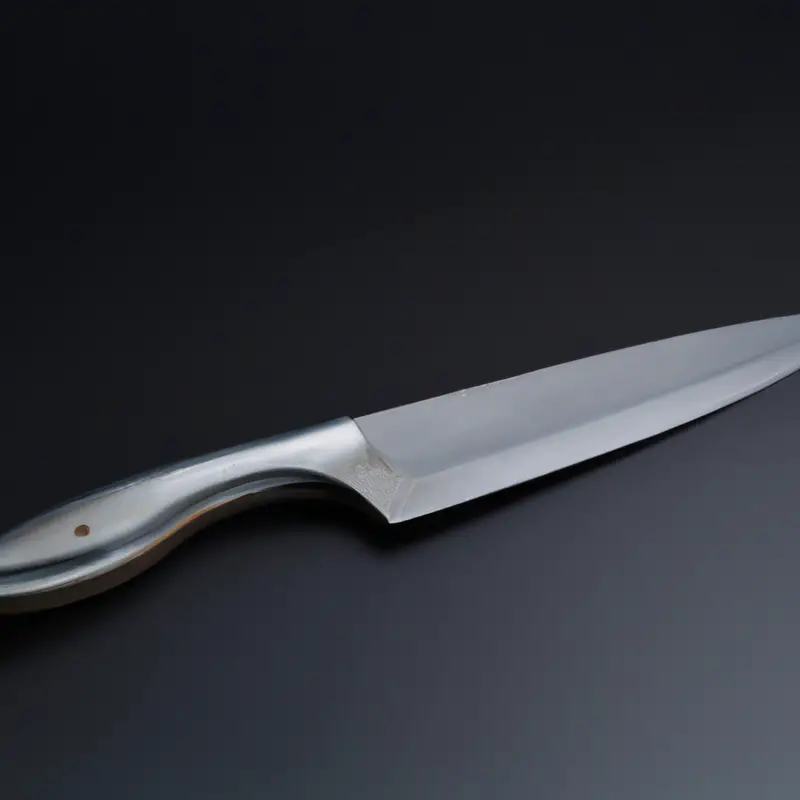
How to choose the right size knife blade guard for your Santoku knife
When choosing a knife blade guard for your Santoku knife, it’s important to select the right size to ensure proper protection. Here are some tips to help you choose the right size:
- Measure your knife blade: Use a tape measure or ruler to measure the length and width of your Santoku knife blade.
- Check the product dimensions: When selecting a blade guard, check the product dimensions to make sure it matches the measurements of your knife blade.
- Consider the material: Blade guards are typically made of plastic or silicone. Choose a material that fits snugly around your blade to prevent damage.
- Look for adjustable options: Some blade guards have adjustable sizing options, which can be a good choice if you have multiple Santoku knives of varying sizes.
By selecting the right size blade guard, you’ll not only protect your Santoku knife blade from damage, but also ensure that it stays sharp and in good condition for years to come.
Protecting your Santoku knife blade from rust and corrosion with a blade guard
A blade guard is an essential accessory for protecting the blade of your Santoku knife from rust and corrosion. Moisture is the leading cause of rust, which can damage your knife blade and make it unsafe to use.
A blade guard provides a protective layer that prevents moisture from reaching the blade.
The guard also protects against accidental cuts and prolongs the life of your knife. When choosing a blade guard, look for one that is properly sized for your knife and made of high-quality materials.
Properly storing your knife in a blade guard after use will ensure its blade stays sharp, safe and in good condition.
Maintaining the sharpness of your Santoku knife with a blade guard
Maintaining the sharpness of your Santoku knife is crucial, and a blade guard can help with that. A blade guard covers the knife’s cutting edge and protects it from damage.
It prevents the blade from rubbing against other utensils and prevents it from rusting.
To maintain the sharpness of your Santoku knife, use a blade guard every time you store it. Ensure that the blade guard fits snugly around the blade and doesn’t fall off.
Additionally, you should clean your knife regularly and oil it periodically to prevent rusting and corrosion.
Proper maintenance of your Santoku knife and blade guard can extend the life of your knife and keep it sharp for longer.
How to clean and store your Santoku knife with its blade guard
To clean your Santoku knife with its blade guard, use a damp cloth and mild detergent to wipe the blade. Rinse with clean water and dry with a towel.
Do not soak the blade or use abrasive sponges or cleaners.
To store your Santoku knife with its blade guard, place the knife inside the guard and store it in a knife block or drawer. Alternatively, hang the knife by placing the blade guard over a magnetic strip.
Remember to keep the blade guard clean and dry.
Check for any signs of wear and tear and replace as needed. Proper storage and care of your Santoku knife and its blade guard will ensure its longevity and sharpness.
The benefits of investing in a high-quality Santoku knife blade guard
Investing in a high-quality Santoku knife blade guard comes with several benefits. Firstly, it ensures that your blade stays sharp and in good condition for an extended period.
The guard protects it from scratches, nicks, and other types of damage that can cause the blade to become dull or unstable.
Secondly, a blade guard provides safety in the kitchen. By covering the sharp blade, you are limiting the risk of accidents occurring when handling or storing the knife.
For instance, it protects you and others from accidental cuts while rummaging through a drawer or while the knife is not in use.
Thirdly, a high-quality blade guard can prevent the risk of rust and corrosion. It creates a barrier between the blade and air, thus reducing the likelihood of rust and other forms of corrosion.
This is especially important if you live in a humid or coastal region where moisture in the air can cause rust to develop quickly.
Lastly, investing in a high-quality Santoku knife blade guard ensures that you are getting the best protection for your knife. A high-quality blade guard is made of durable materials, fits your knife well, and has adequate ventilation.
This combination guarantees optimal protection, which translates to a longer lifespan for your knife.
Overall, a high-quality Santoku knife blade guard offers numerous benefits for the longevity and safety of your knife, making it a necessary investment for any chef or home cook.
Ensuring safety in the kitchen with a Santoku knife blade guard
Ensuring safety in the kitchen with a Santoku knife blade guard is crucial to avoid accidents and injuries. The blade guard protects the razor-sharp blade when not in use and prevents the knife from slipping or sliding while cutting.
When not in use, the guard ensures the safety of your fingers from accidental cuts.
It is also essential to use the blade guard during transportation or storage to prevent damage or injury. Always ensure that the guard is firmly in place and fits snugly over the blade before storing or transporting your Santoku knife.
Investing in a high-quality blade guard will not only protect your knife but also give you peace of mind while working in the kitchen.
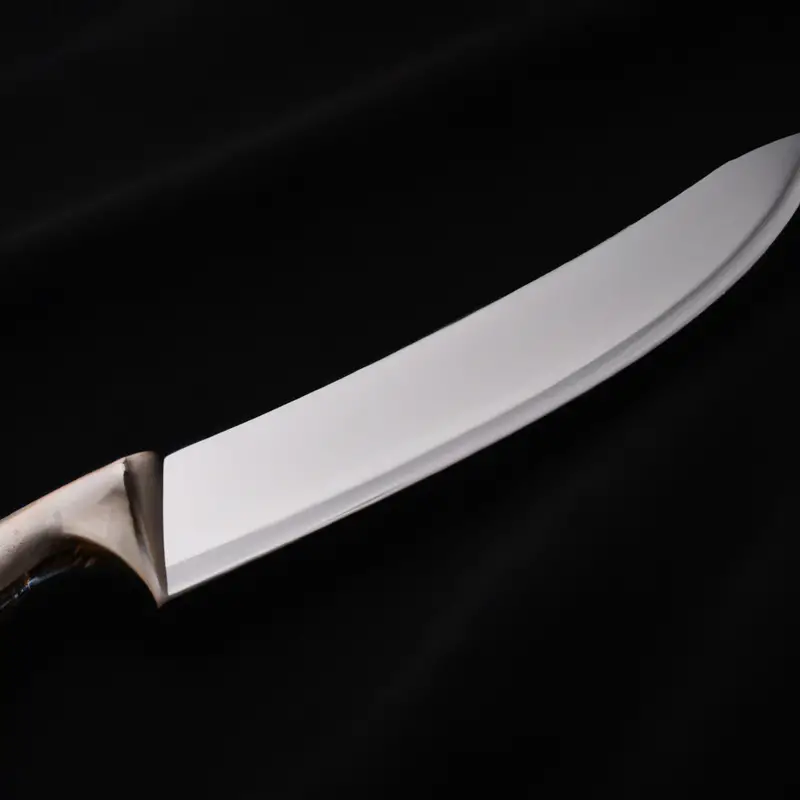
Making the most of your Santoku knife blade guard: tips and tricks for usage and maintenance
To make the most of your Santoku knife blade guard, use it consistently to protect the blade from scratches, dents, and nicks. Ensure that your blade guard fits your knife properly to prevent any harm or damage to the blade.
Clean your blade guard on a regular basis to maintain good hygiene and prevent dust and dirt buildup.
Store your Santoku knife with its blade guard attached to prevent the blade from coming into direct contact with other tools and objects. Lastly, invest in a high-quality Santoku knife blade guard to keep your knife sharp and rust-free for years to come.
Final Verdict
A Santoku knife is a valuable and essential tool for any kitchen, and protecting its blade is crucial to maintain its sharpness and longevity. With a reliable and well-fitting blade guard, you can easily prevent rust, corrosion, and damage from occurring to your Santoku knife blade while ensuring safety in the kitchen.
By choosing the right size and high-quality blade guard, and properly cleaning and storing your knife with it, you can keep your Santoku knife in pristine condition and ready to use whenever you need it.
So, invest in a quality blade guard for your Santoku knife and enjoy the benefits of a sharp, durable, and safe cutting edge, every time you cook. Trust us, your Santoku knife will thank you for it!

